“There in the ring where name and image meet” —W.H. Auden
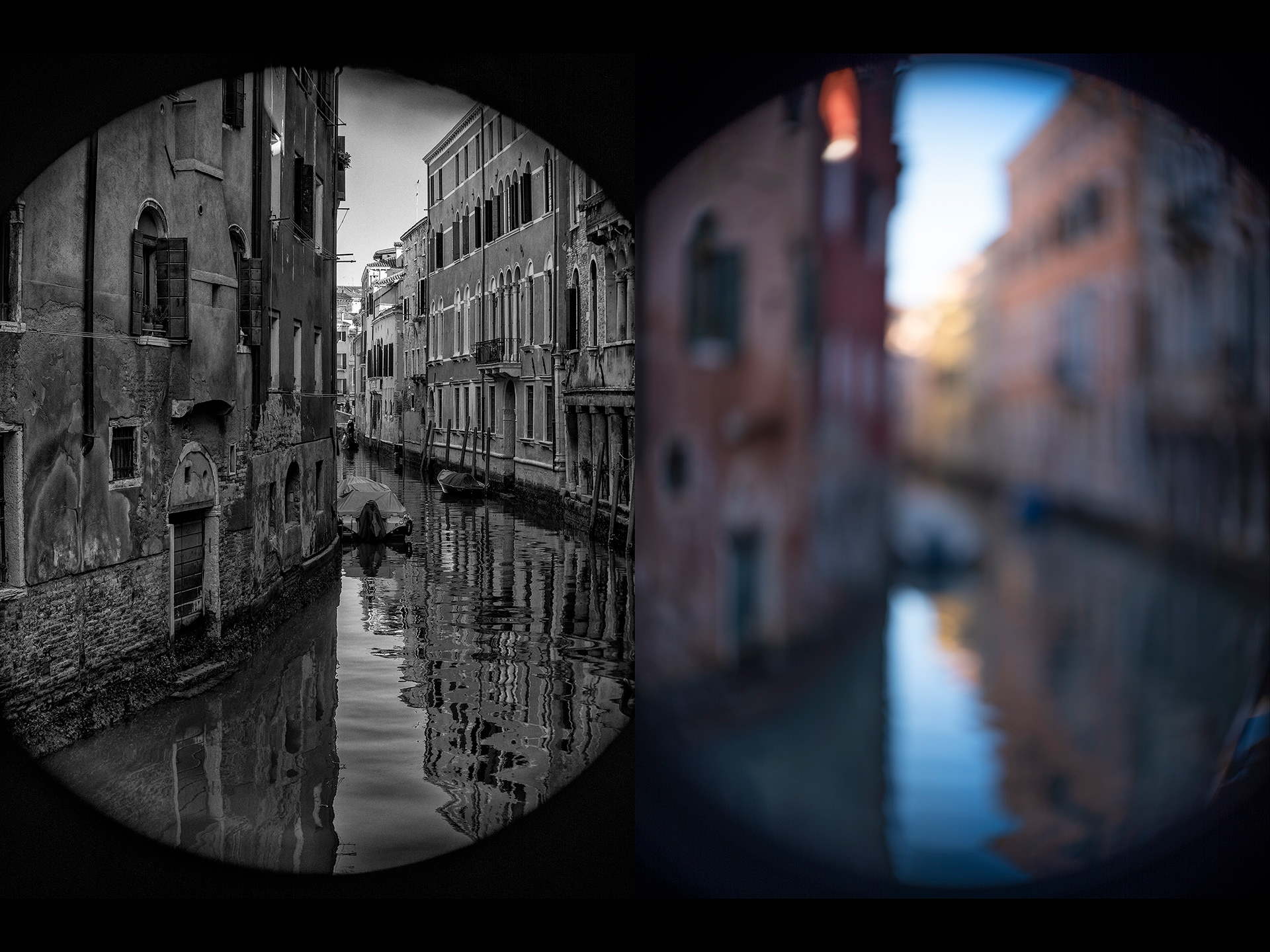
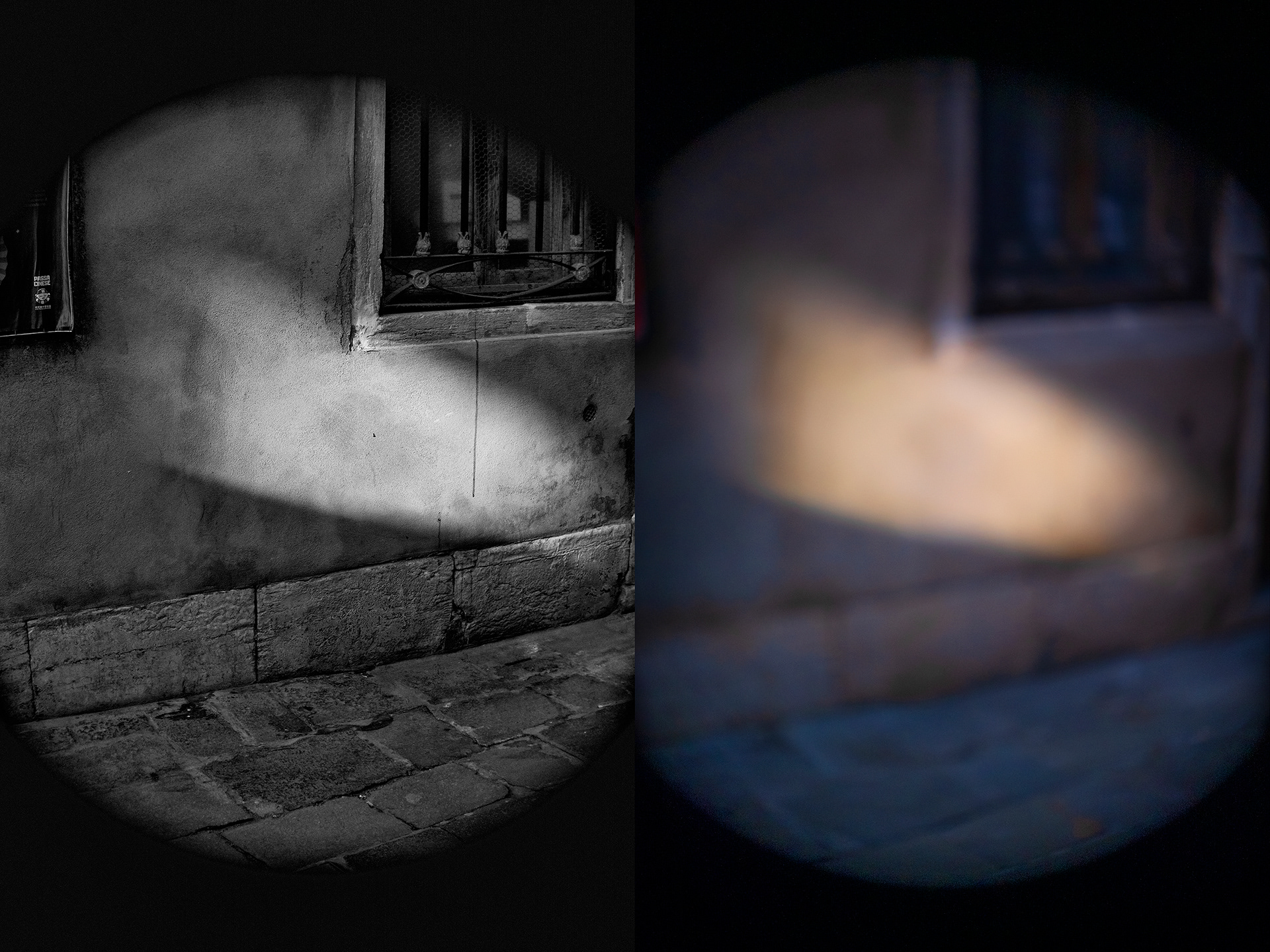

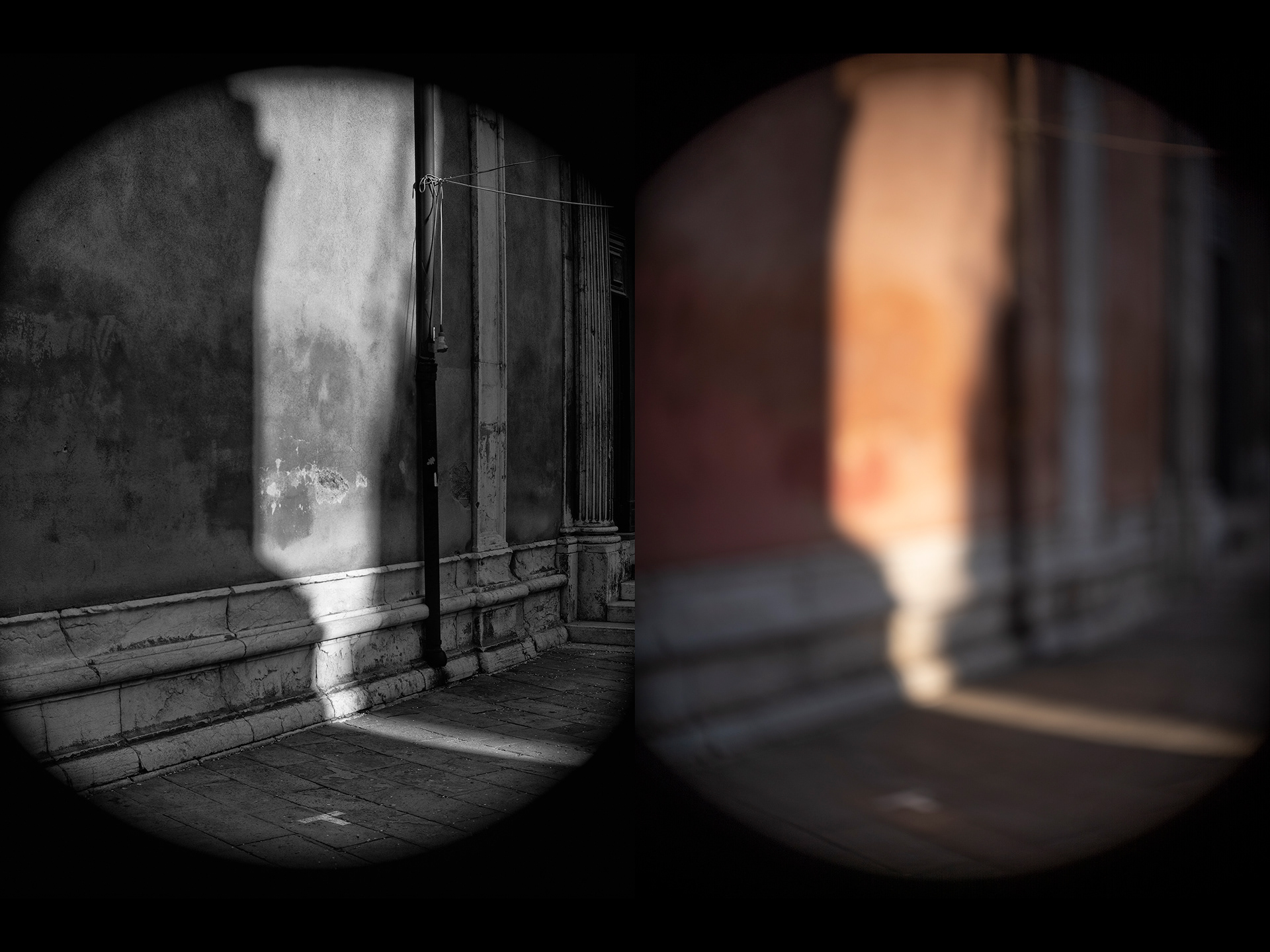
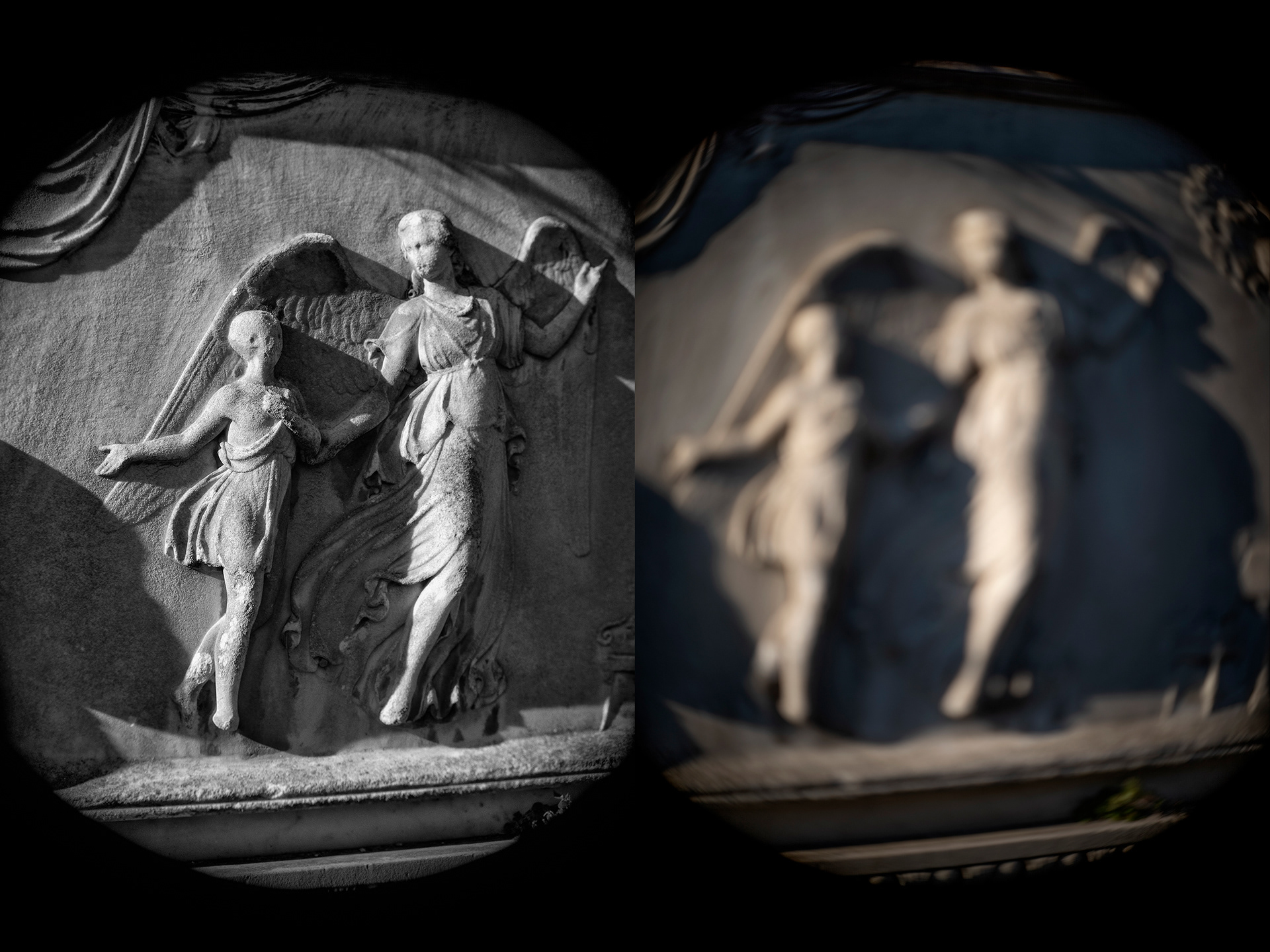
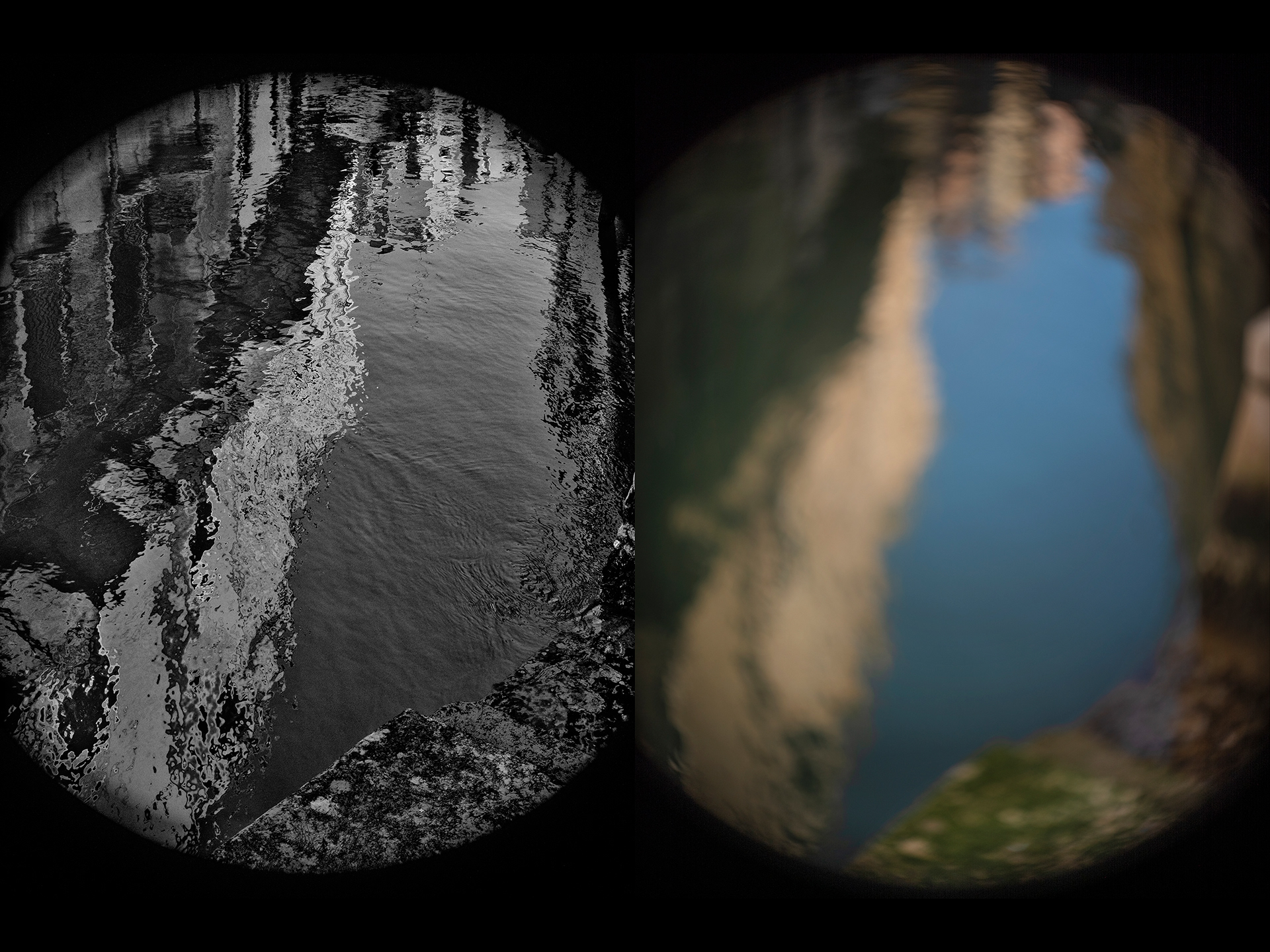
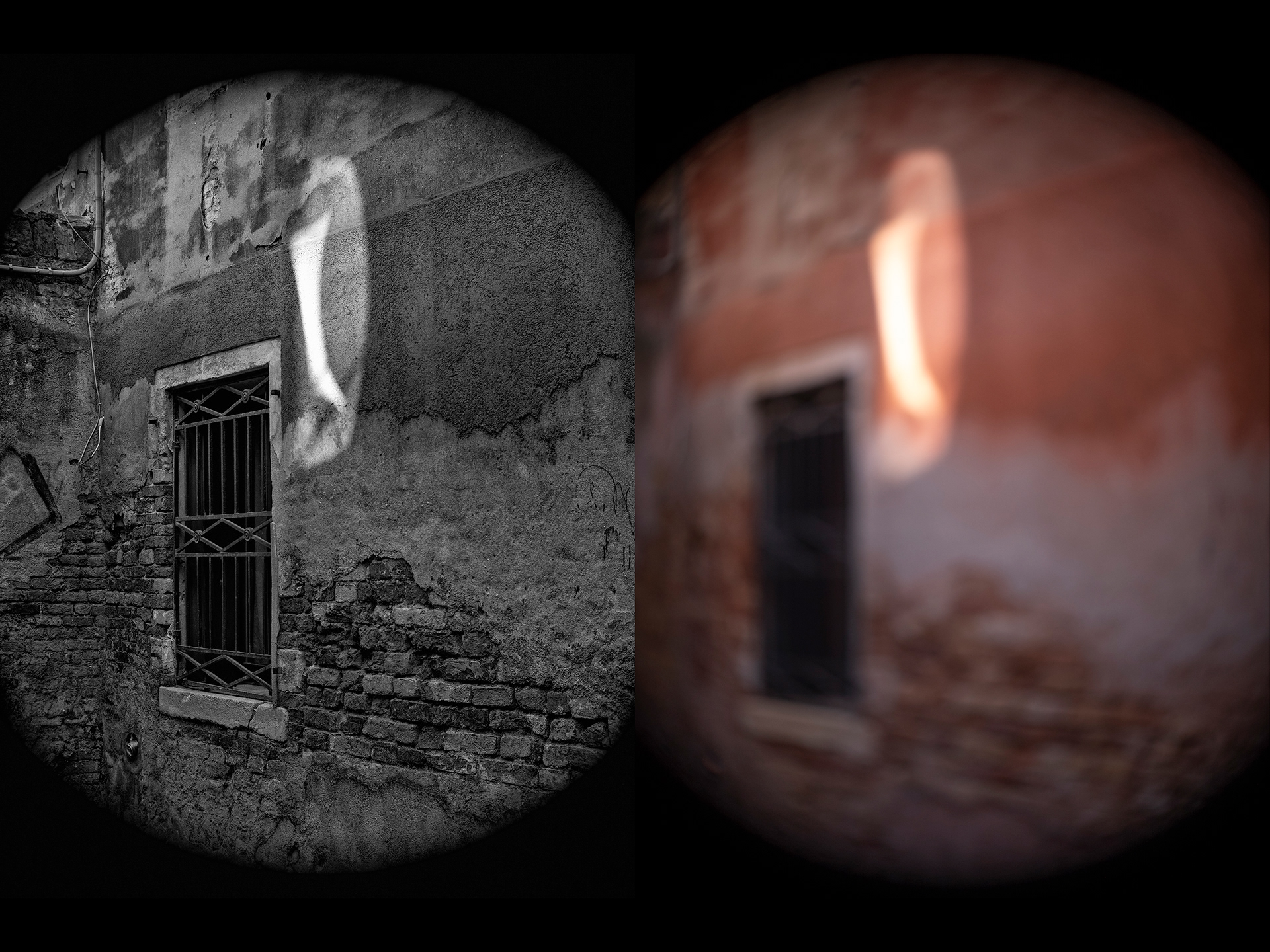
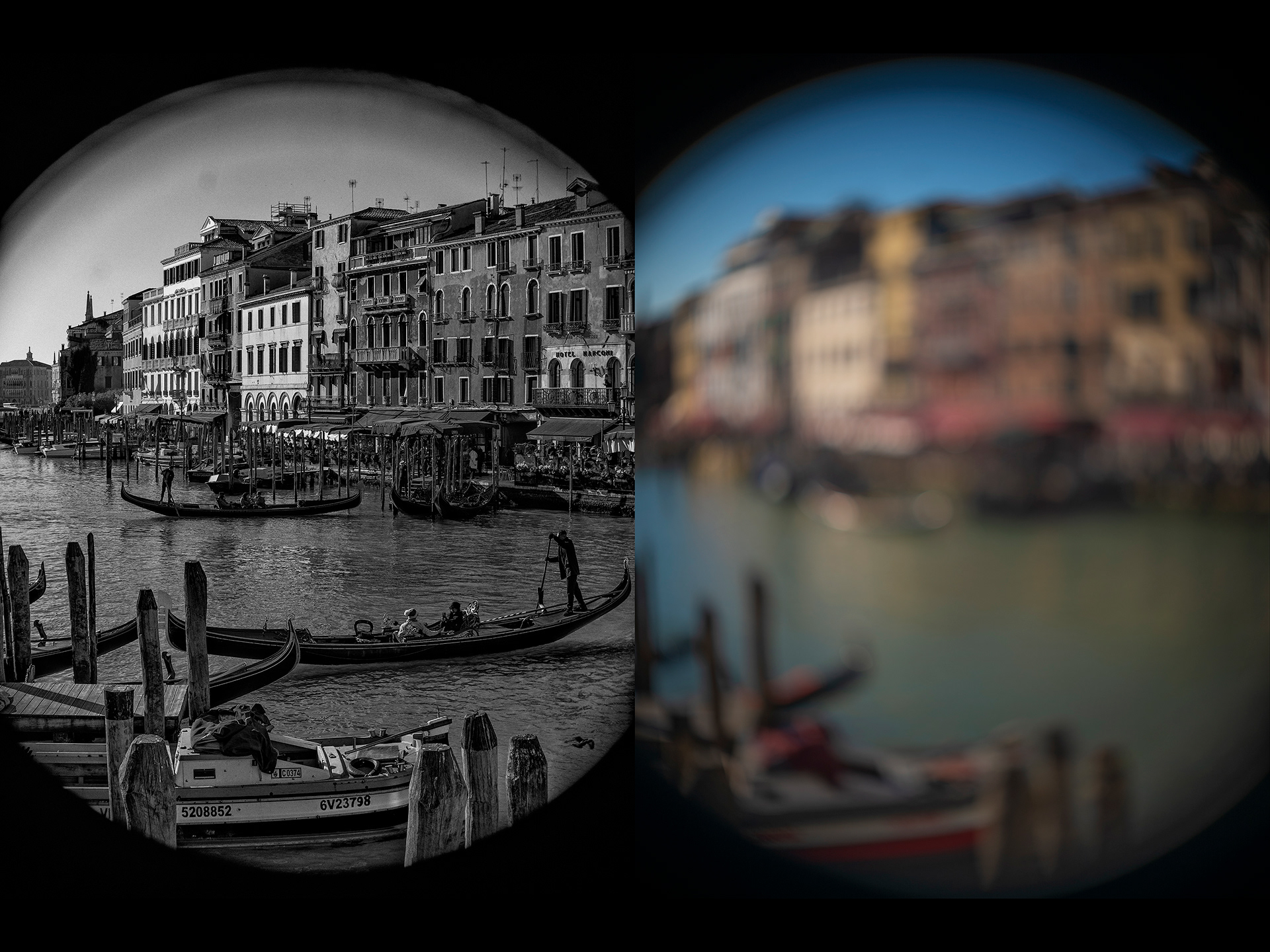
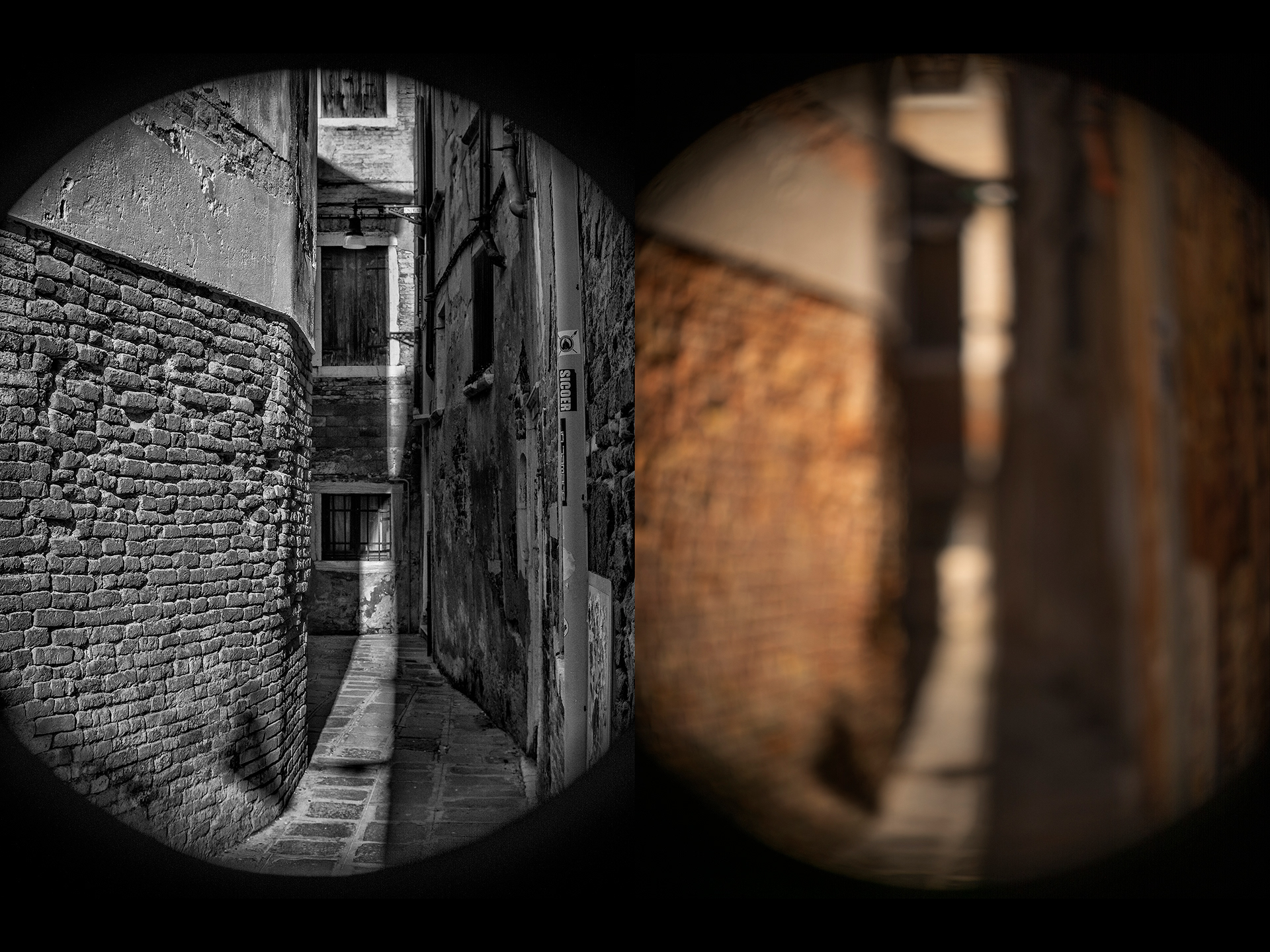
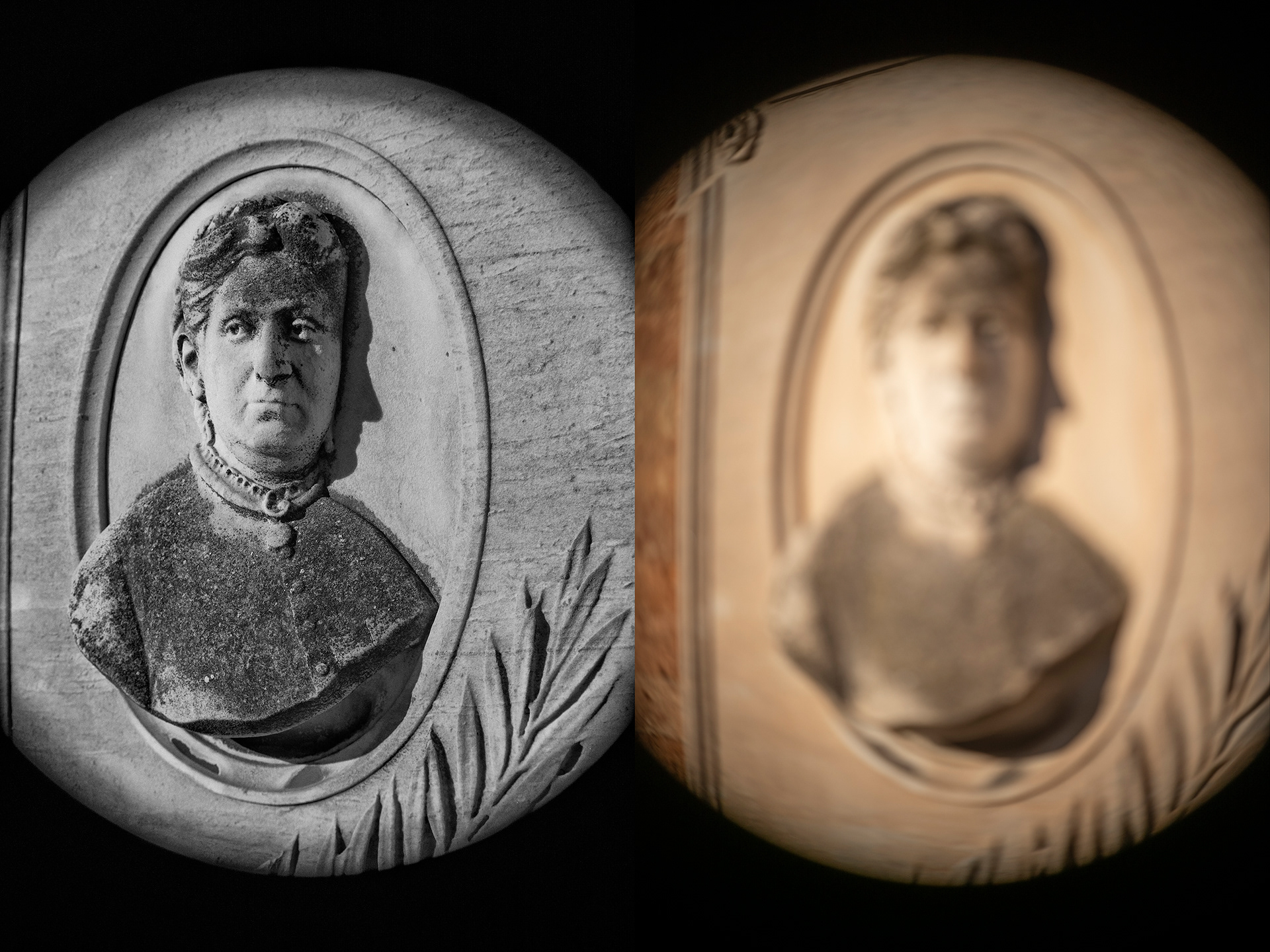
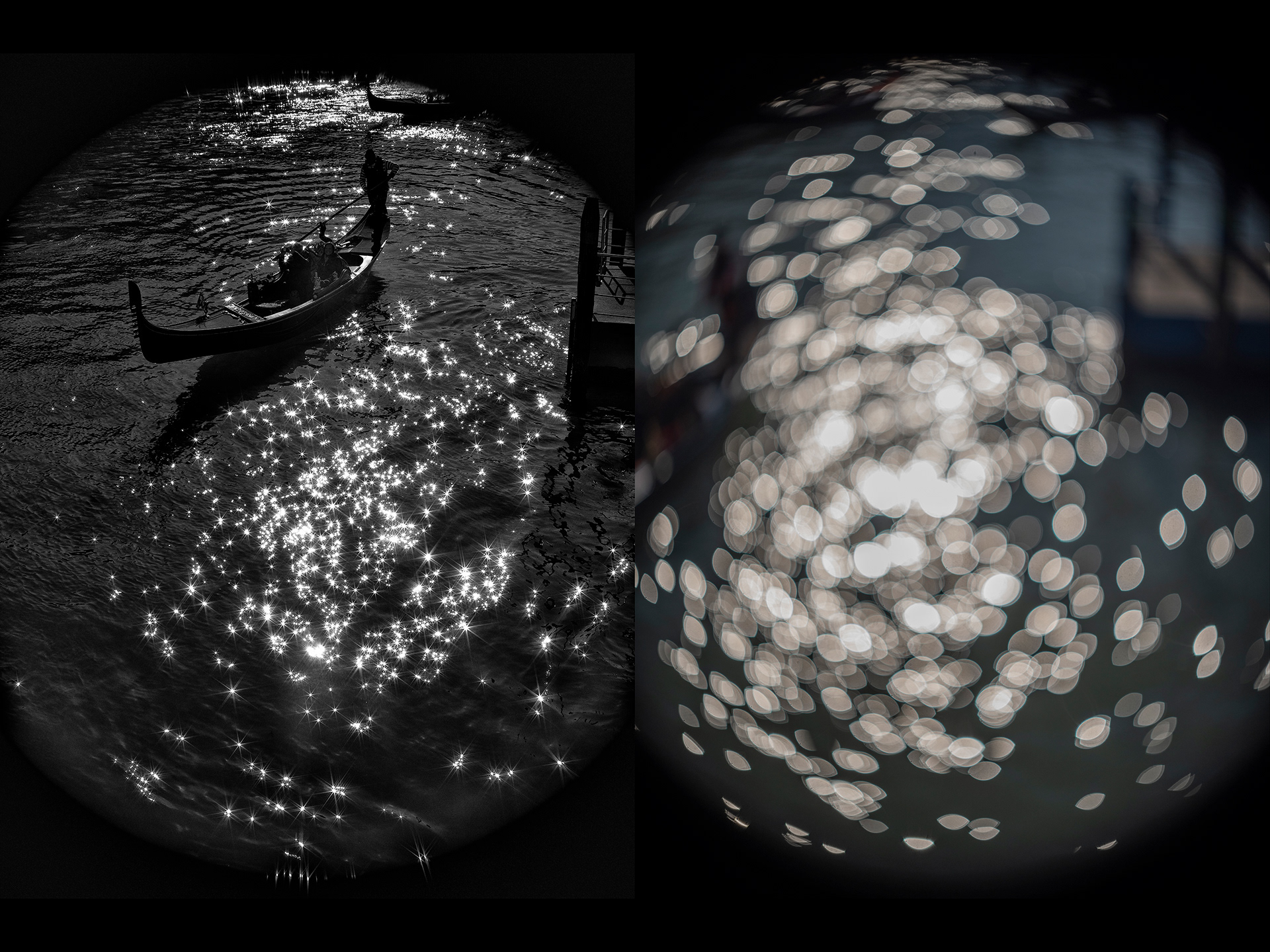
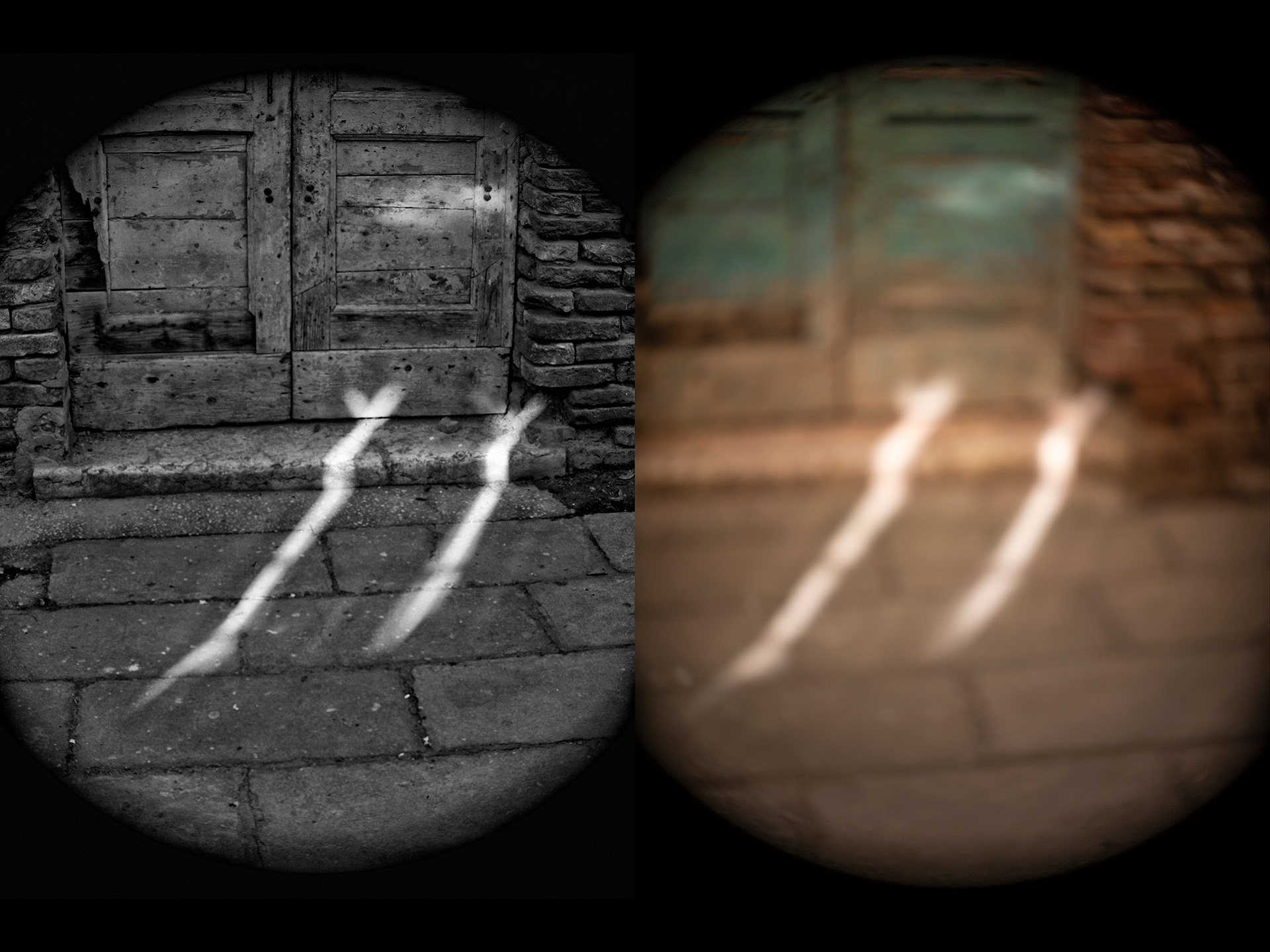
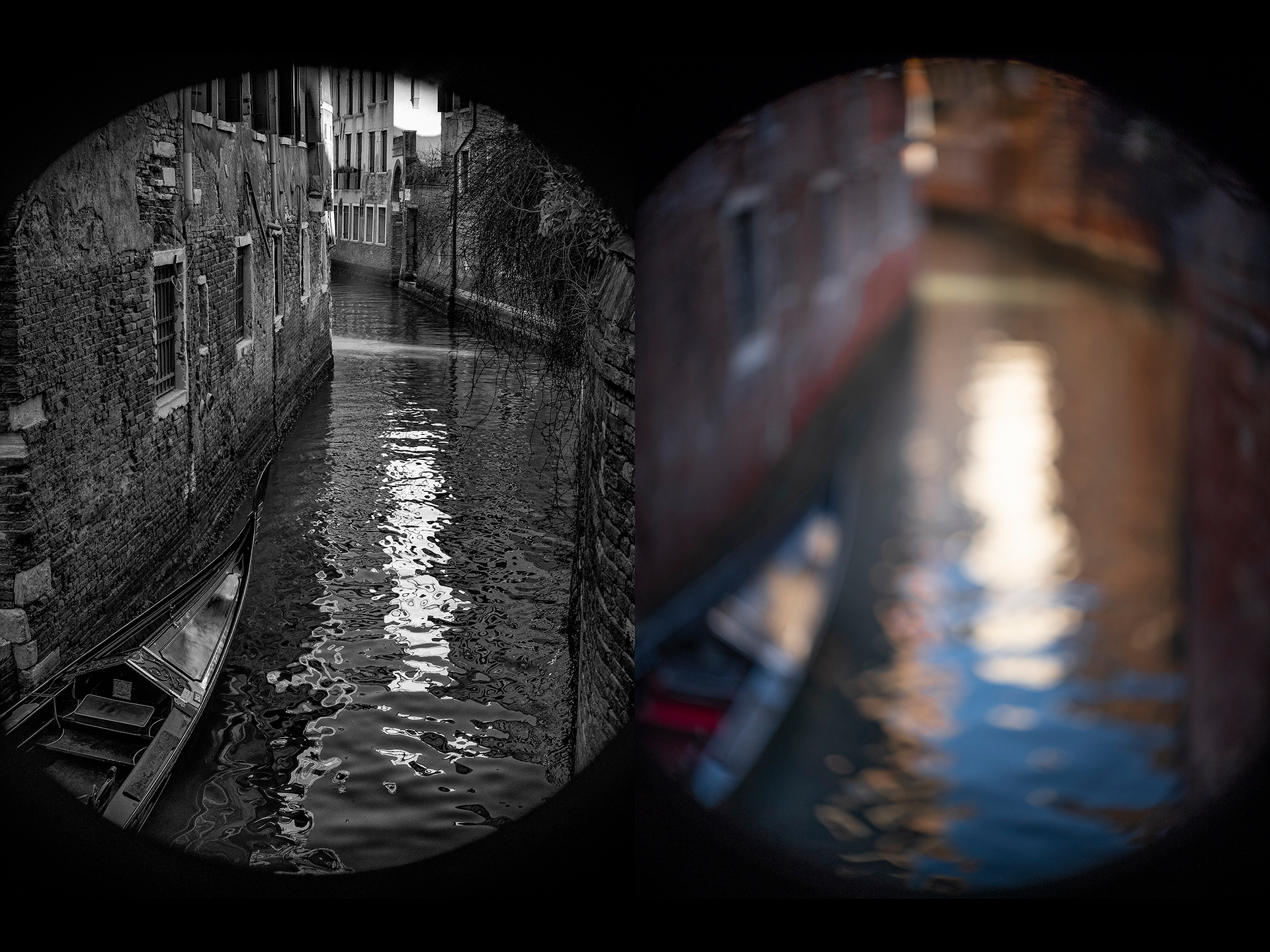
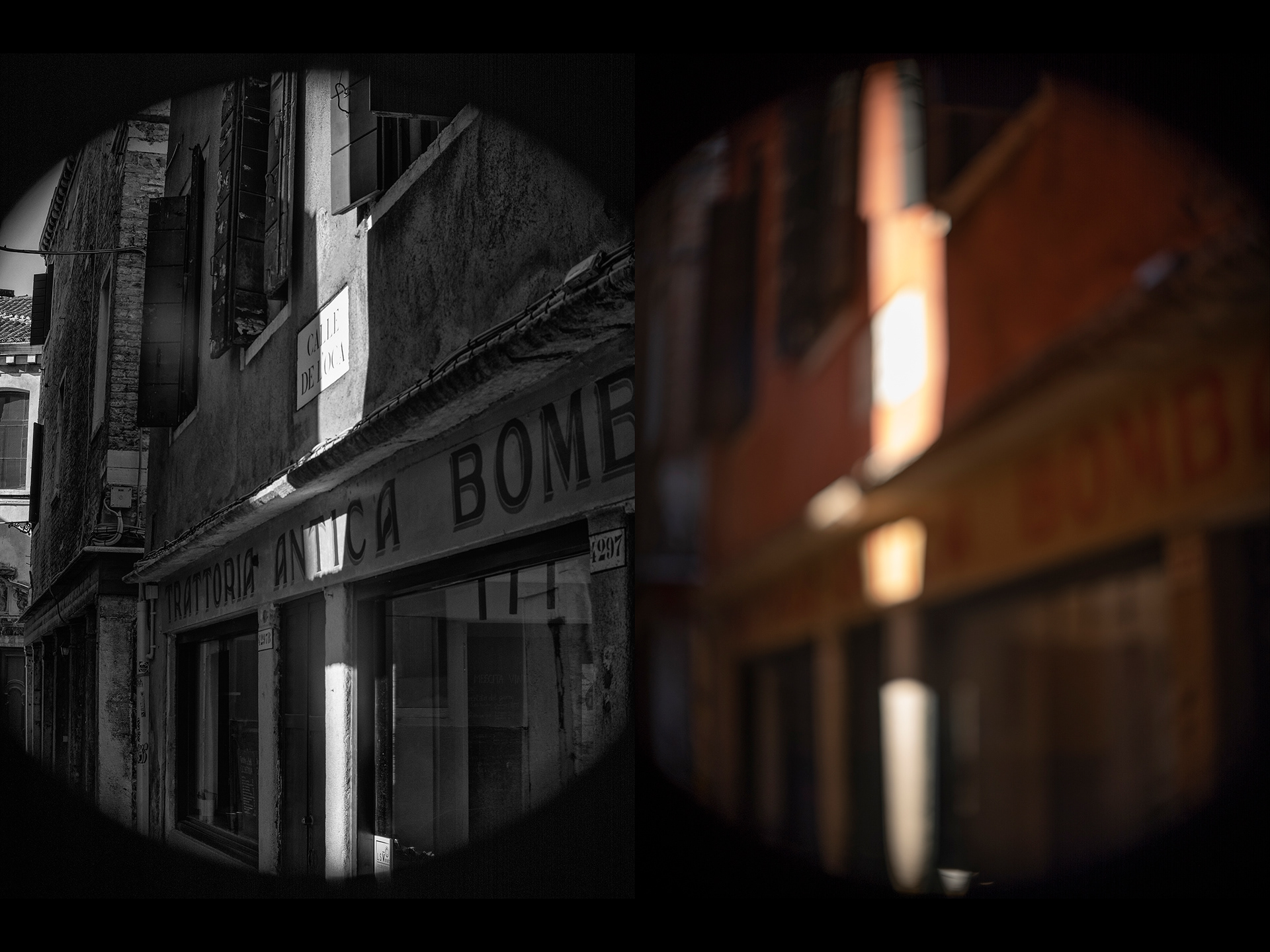
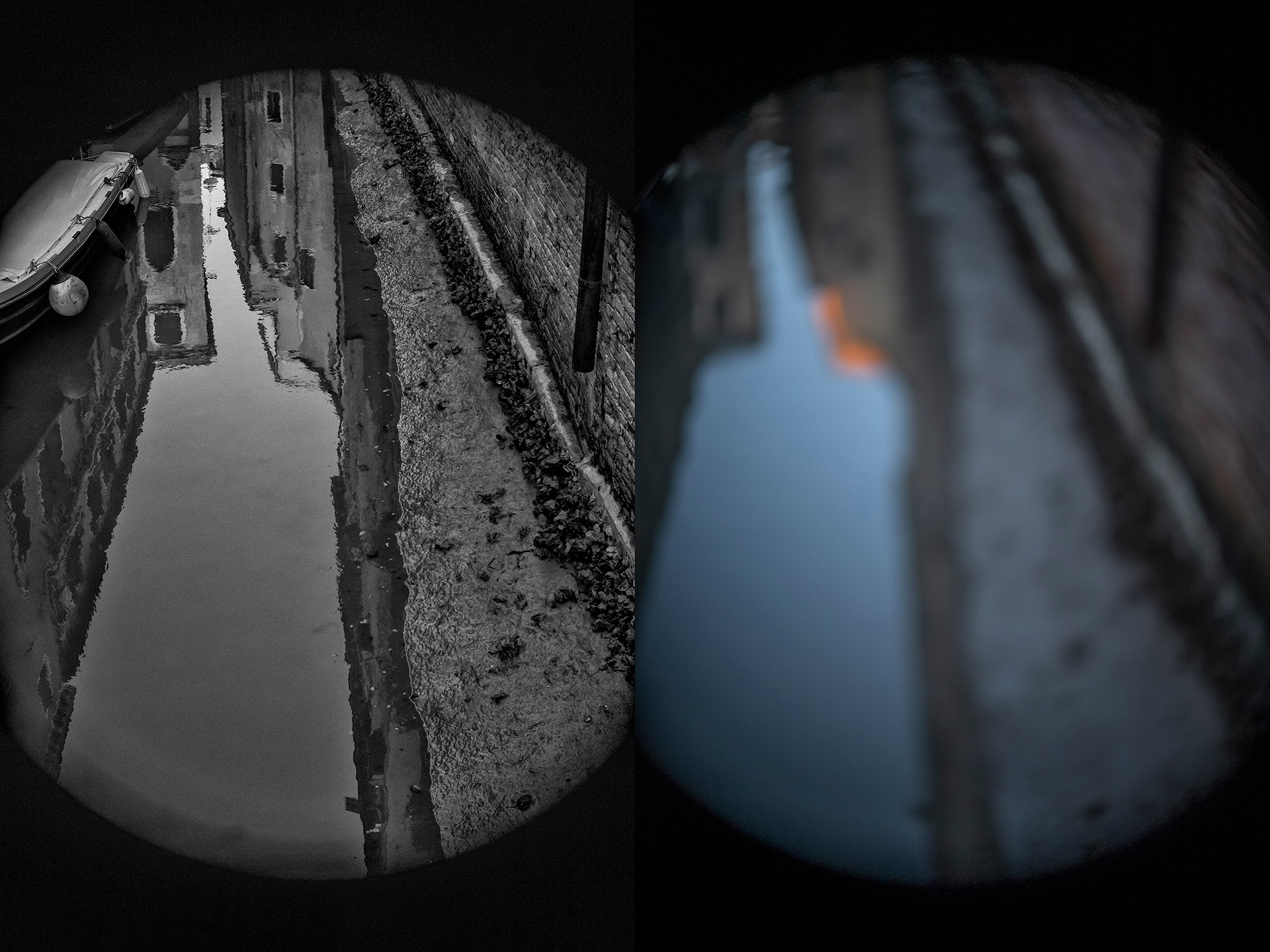
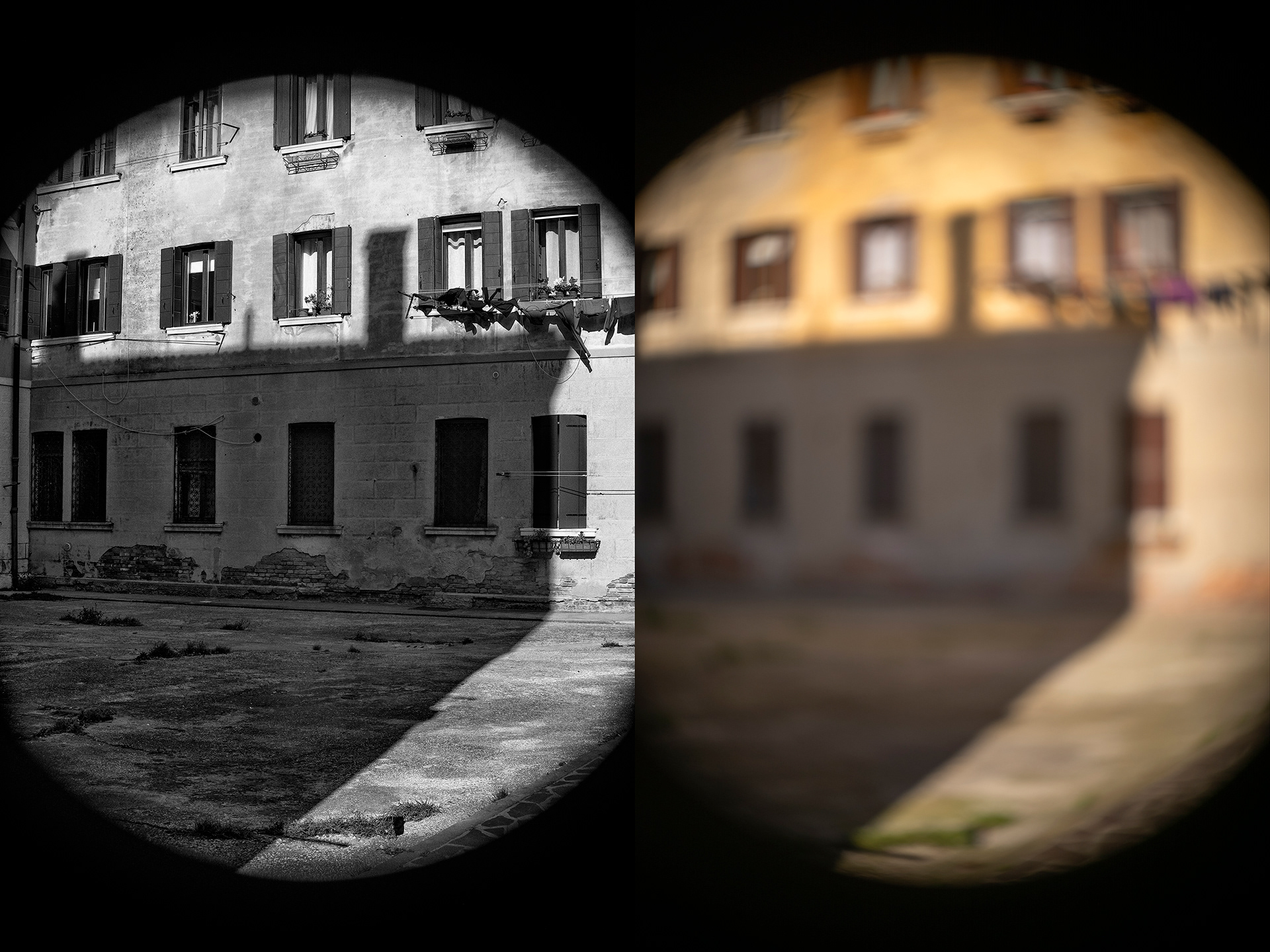
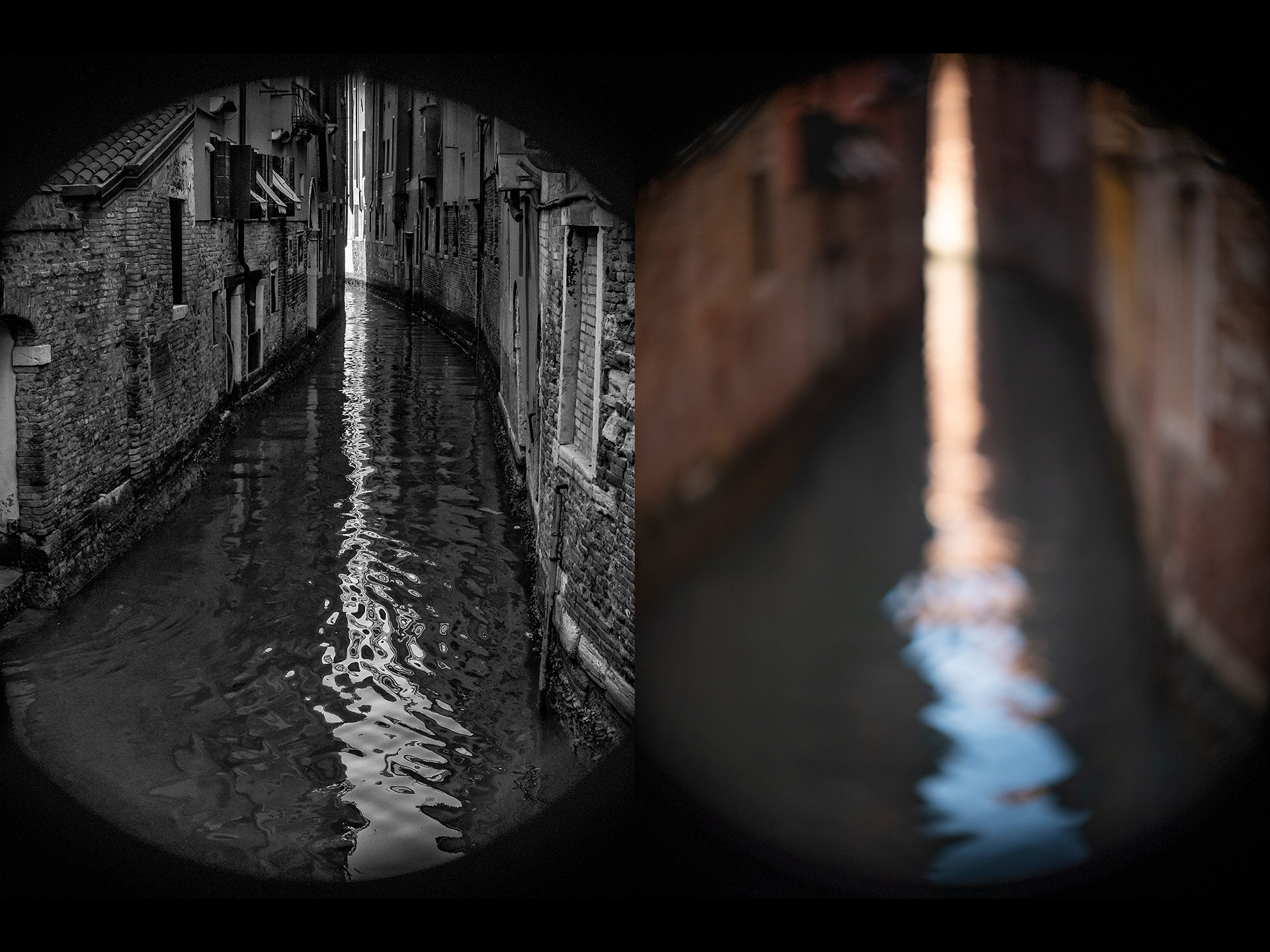
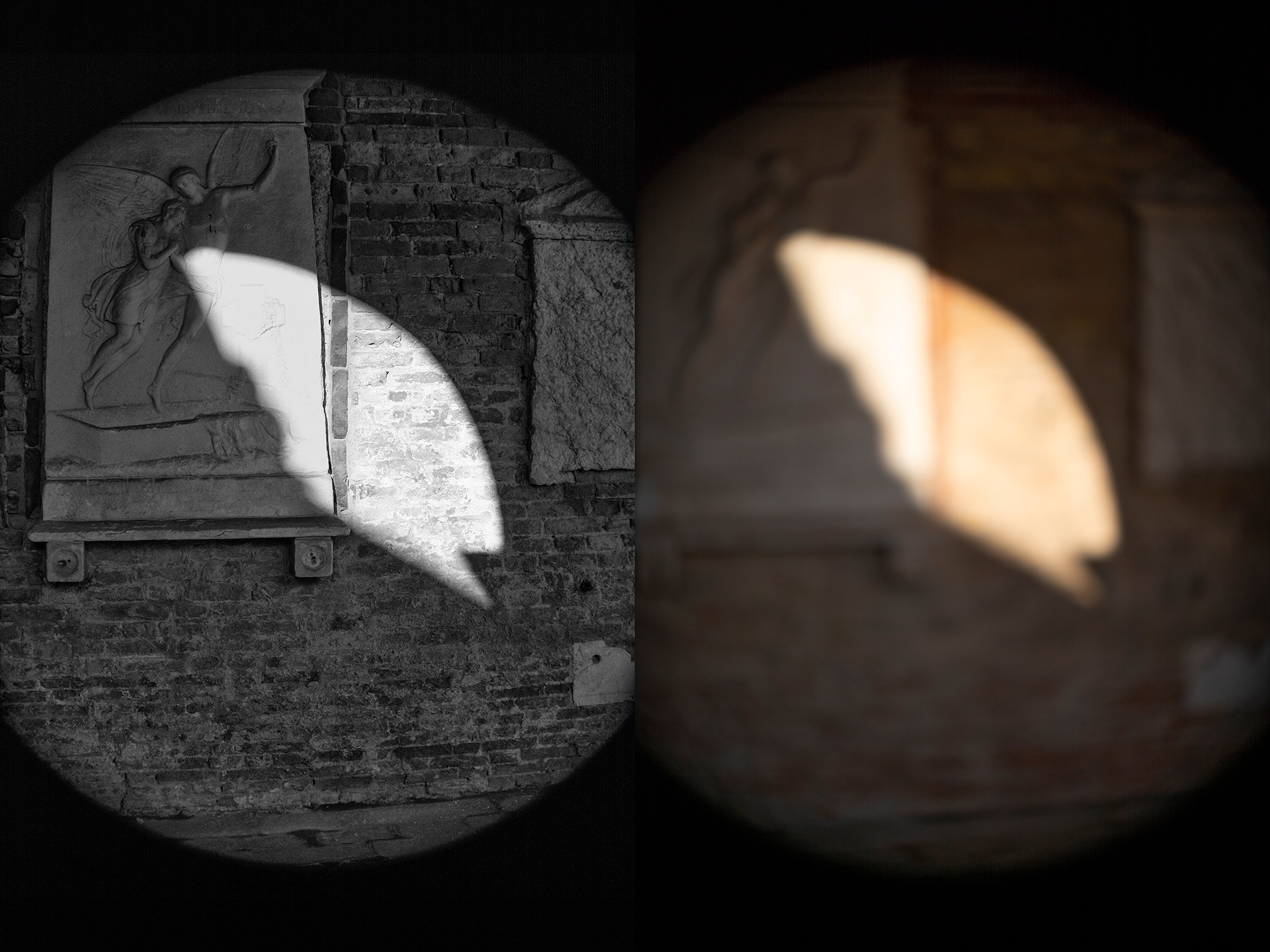
Notes
Each of the photographs here is a double image that forms a single statement of meaning, with pictorial properties apportioned between the halves: the right-side image is fully chromatic and optically unsharp, while the left-side image is monochromatic and optically sharp. The scalloped tops and bottoms of the pairs are the natural result of photographing with a lens whose image circle is smaller than the sensor—in this case, a 50mm f/ 1.9 Apollo Television lens on a Leica SL2-S digital camera.
I mean these pairs to operate on two registers. As diptychs, they stage problems in visual heuristics, forcing representation to proceed through a process of commutation, in which each contributing image offers a decidedly partial account of the world. As stereographs—looked at through a conventional stereo viewer in which each eye sees only one photograph and the brain is prompted to reconcile them into a single mental image—they stage problems about perception itself. In ordinary stereoscopy, the brain synthesizes slightly unlike images—intentionally laterally displaced—to make an artificial experience of three-dimensional vision (not fully 3-D, something closer to what I would call 2½-D). In this case, the contributing images are made intentionally to impede fully congruous mental synthesis, inducing instead a gentle form of what neuroscience calls binocular rivalry. My own “sympathetic rivalry” (to give the optical phenomenon at work here a name) will be different from person to person, but in general it should be possible to behold one’s own perceptual processes as from a distance. Most viewers, I think, will discern something of the ways their own brain attempts to construct geometry through both hard and diffuse lines, and to read the pulse of saddened to gladdened to saddened color.
As both diptychs and stereographs, these double-image photographs seem to me to beg a logical problem: do they actually cohere, or fail to cohere, or both cohere and fail to cohere, or neither cohere nor fail to cohere? Perhaps all four of these possibilities are true at once? They also seem to beg a poetical question: does the black-and-white-and-sharp image analogize, say, the mind, thinking? Does the color-and-unsharp image liken itself to body, feeling? Or is it the reverse? And these questions in turn seem to me to beg a metaphysical question: who and what mediates between the thinking mind and the feeling body, the feeling mind and the thinking body, the acute mind and the diffuse body, the diffuse mind and the acute body?
A friend to whom I showed these pictures and asked these questions replied this way:
“the mysterious mediator of your photographs, the unknown thrumming through them, might it also go by the name 'consciousness'?... after all, what you're holding visible and feelable is the slipperiness of perception, and the otherness that is consciousness, and its odd methods of mediation...”
In these technical and poetical and philosophical respects, this project could, I suppose, have been attempted anywhere. But in fact Venice—in its mystery and magnificence and sheer improbability, a city that Joseph Brodsky describes as “eternity itself,” by which he means, I think, a place where we are pulled abruptly close to time’s own liquidity—a city whose builders were magicians enough to make Brodsky wonder whether they would someday build a bridge to a star—Venice turns out to be the essential medium for this meditation. At Brodsky’s grave in Venice, I read aloud this section from his book of essays on Venice, Watermark:
“I always adhered to the idea that God is time, or at least that His spirit is... In any case, I always thought that if the Spirit of God moved upon the face of the water, the water was bound to reflect it. Hence my sentiment for water, for its folds, wrinkles, and ripples, and—as I am a Northerner—for its grayness. I simply think that water is the image of time…. The upright lace of Venetian façades is the best line time-alias-water has left on terra firma anywhere. Plus, there is no doubt a correspondence between—if not an outright dependence on—the rectangular nature of that lace’s displays—i.e., local buildings—and the anarchy of water that spurns the notion of shape. It is as though space, cognizant here more than anyplace else of its inferiority to time, answers it with the only property time doesn’t possess: with beauty. And that’s why water takes this answer, twists it, wallops and shreds it, but ultimately carries it by and large intact off into the Adriatic.”
Jason Francisco
Venice, 2023
Venice, 2023